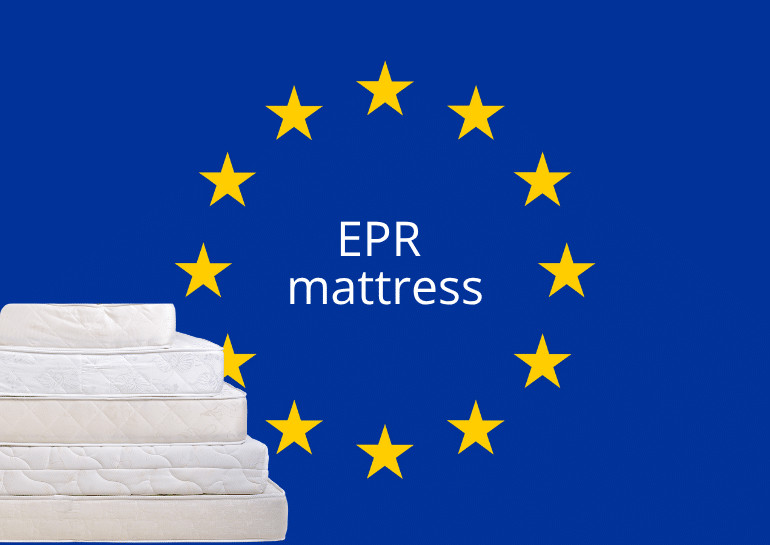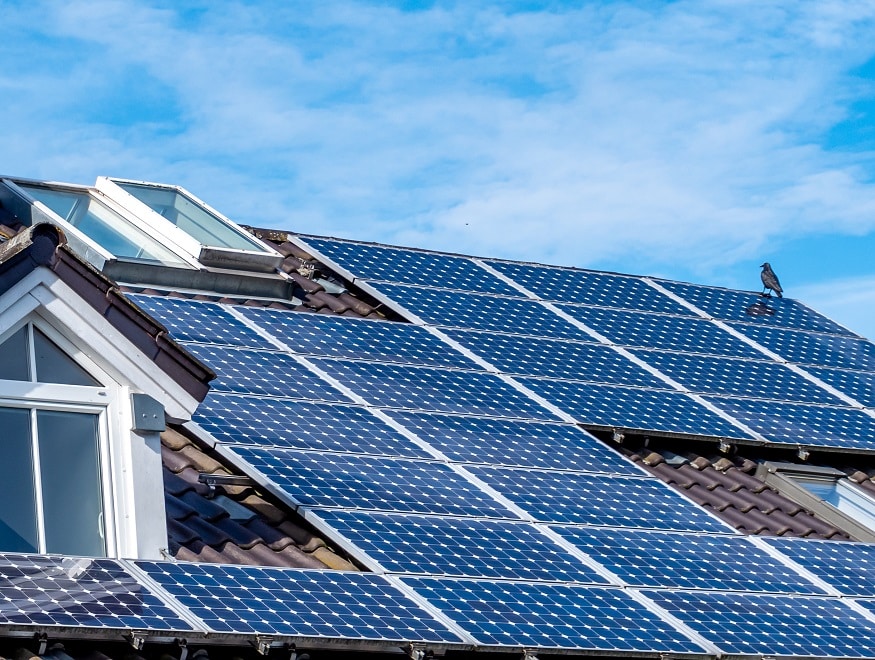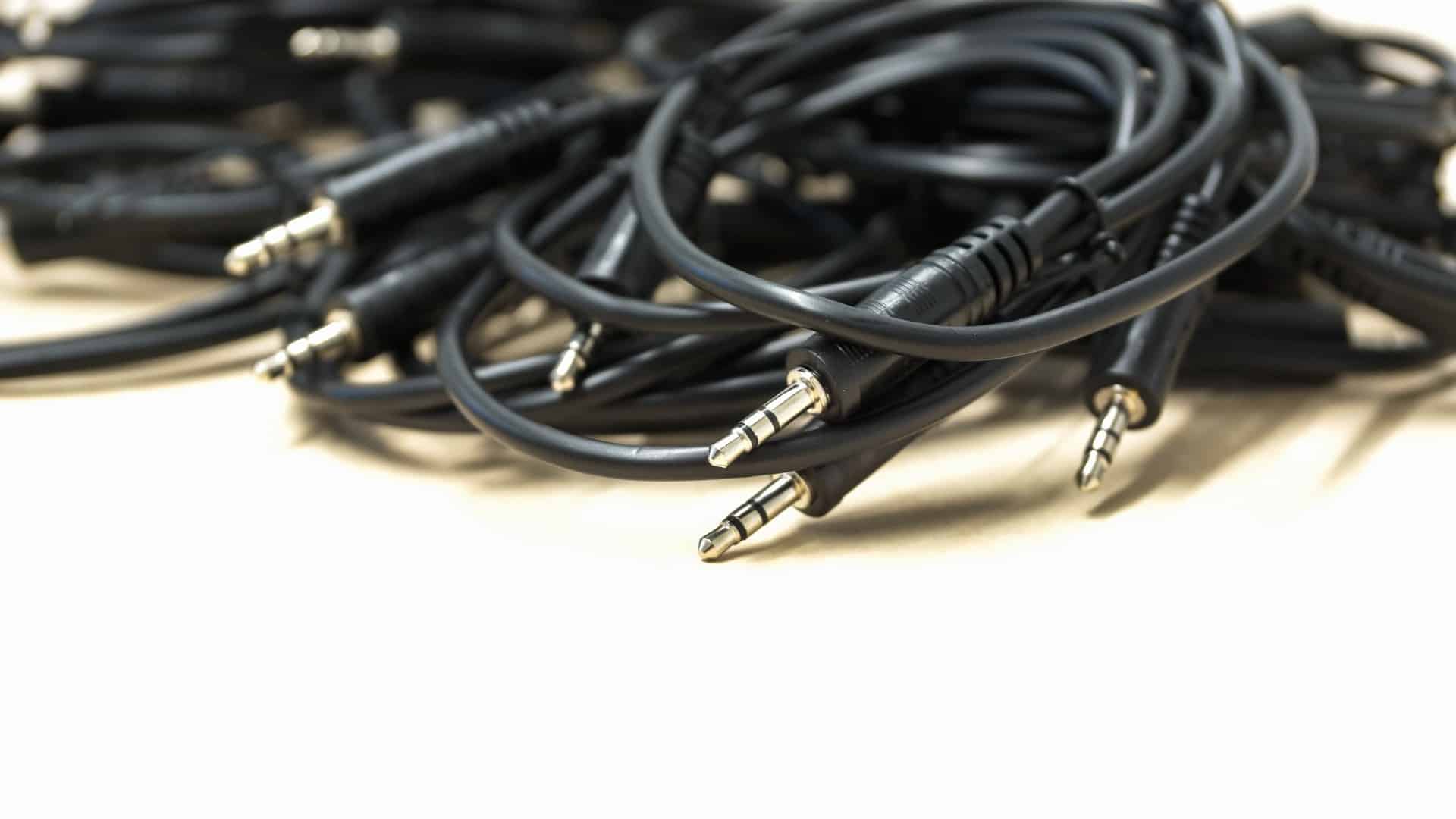EPR for mattresses – current information and goals at a glance
In recent years, awareness of sustainability has steadily increased in Germany. This necessary shift in thinking is reflected in both private households and businesses. In the latter context, the EPR, or “Extended Producer Responsibility,” is worth mentioning. This already affects many areas in which manufacturers must assume responsibility for the disposal and recycling of their products. What has not yet been introduced is the EPR for mattresses . This is now set to change.
For Quick Readers
Extended producer responsibility, or EPR for short, is to be introduced for mattresses in Germany as well. This is at least what various bodies, such as the Mattress Industry Association and the environmental organization NABU, are calling for. The goal is to eliminate the incineration of old mattresses and instead recycle them in an environmentally friendly manner. This is already working successfully in France and the Netherlands. An initial position paper addressed to environmental policymakers outlines a central EPR for mattresses that ensures their return and recycling.
Why introduce an EPR for mattresses?
In Belgium, France, the Netherlands, and some US states, such as California, comprehensive EPR (Extended Producer Responsibility ) has already been established for mattresses. The reason is simple: mattresses today are often very complex. They often consist of more than seven different types of foam. Due to this diversity of materials, proper separation at the end of their lifespan is very complex, environmentally damaging, and also expensive.
However, to date, only a small fraction of this is recycled. The vast majority of the approximately seven million mattresses disposed of annually are incinerated.
This is precisely where the EPR for mattresses comes in. It is intended, on the one hand, to hold manufacturers more accountable and, on the other, to remove hurdles that make collection and recycling significantly easier. An EPR for mattresses also creates a clear incentive to make them significantly more resource-efficient and recyclable from the outset.
How are mattresses currently disposed of?
As briefly mentioned, mattress disposal is currently anything but environmentally friendly. To better understand the problem, let’s take a closer look at the composition of mattresses.
Mattresses essentially consist of a core and a textile cover. Different types are distinguished depending on the material used.
- Foam mattresses : They dominate the market in Germany. About two-thirds of all models sold are made of polyurethane (PUR) foam.
- Innerspring mattresses : These make up around a quarter of the market and contain steel springs sewn into fleece pockets, which are additionally covered with foam to increase sleeping comfort.
Currently, the life cycle of a mattress in Germany almost exclusively ends in incineration. Over 95 percent of used mattresses are recycled for energy, generating electricity and heat. While some metal components can be recovered, plastics and textile fibers are irretrievably lost.
Why is recycling hardly feasible under current conditions and incineration the standard?
One reason for the lack of recycling lies in the method of disposal itself. Mattresses are predominantly disposed of via bulky waste collection or commercial waste collection. In this process, they are compressed together with other waste. The resulting contamination makes material recycling virtually impossible, leaving energy recovery as the only practical solution.
This is precisely what the EPR for mattresses is intended to change and increase the recycling rate in Germany, as is being demanded by many.
What should an EPR for mattresses look like?
The good news is: environmentally friendly disposal and recycling of mattresses is possible. This requires the creation of a regulatory framework for the European Product Safety Directive (EPR) for mattresses. It is important that mattress toppers are collected in a clean and sorted manner to initiate the recycling process:
- Mechanical recycling process : Here, valuable materials such as steel from spring mattresses and foam are recovered, and textiles such as foam flakes are processed into new products using smart processes.
- Chemical recycling process : Raw material recovery takes place at the molecular level, allowing new mattresses to be manufactured and marketed using recycled PUR foam.
Examples of chemical recycling processes can already be found in France and the Netherlands. In Germany, pilot projects and research initiatives are currently exploring alternative solutions. Initial recommendations favor a combination of mechanical and chemical recycling processes.
It is therefore essential to create an EPR system for mattresses that relies on separate and clean collection of mattresses, careful storage, targeted transport, and subsequent disassembly into their individual components. This is the only way to ensure that no contamination hinders the recycling process.
Relief for companies: Producer Responsibility Organisation
The focus of the funding is the “Producer Responsibility Organization” (PRO) concept, which centralizes the responsibility of manufacturers. This model not only enables efficient control but also reduces costs while creating incentives for innovations in circular product design. This would create a sustainable material cycle that both conserves resources and significantly reduces waste.
What is the current development of the EPR for mattresses?
The Mattress Industry Association is actively committed to greater sustainability and resource conservation in the industry and has drafted a comprehensive position paper on the EPR for mattresses. The plan is to establish an operator organization to initiate the first concrete steps toward a circular economy. The concept is intended to serve as a model for political decision-makers and stakeholders along the entire value chain. The stated goal is to hold manufacturers more accountable, from production and return to disassembly and recycling.
The association has formulated 15 key points that should serve as the basis for a German EPR system. For effective implementation, the association calls not only for a legal framework but also for concrete regulations governing collection and recycling. Separate collection of mattresses from collection to the recycling facility should ensure that the materials remain clean and undamaged. This is the only way to achieve true recycling and close the material cycle.
Environmental organizations such as NABU (Nature and Biodiversity Conservation Union) and companies like IKEA are also calling for more commitment from the federal government. NABU has also formulated clear demands that align with those of the association. Here, too, the EPR for mattresses is a top priority.
EPR for mattresses in a country comparison
country | Year | Structure | Affected actors | Infrastructure | Recycling rate (current) | Goals | Special features |
France | 2012 | Collective through PROs ( ecomaison , Valdelia ); financing through eco-contribution | Manufacturers, dealers, importers | 4,794 collection points nationwide (municipal, retailers, social enterprises) | 98% (2020, based on collected mattresses) | 90% recovery, 50% recycling rate, 40% collection rate (2023) | Focus on social actors, promotion of R&D, design consulting |
Belgium | 2021 | Collectively via Valumat or own approved system per region | Manufacturers, dealers, importers (depending on region) | Varies by region (e.g. municipal recycling parks, retailers) | Approximately 70% of the collected mattresses (and rising) | 80% collection, 75% recycling by 2030; design goals by 2029 | Regionally differentiated; no obligation for retailers to take back goods |
Netherlands | 2022 | Central Foundation MRN; financing through waste management contributions | Manufacturers, importers (>200 mattresses/year) | Municipal collection points, dealers, manufacturers, container system | RetourMatras : approx. 85%; target: 75% market recycling by 2028 | 75% recycling rate by 2028; 90% market utilization by 2024 | Chemical recycling under development, contribution varies according to recyclability |
What are the challenges for manufacturers and retailers regarding the EPR for mattresses?
In the future, mattresses must be designed to be single-use, modular, and recycling-friendly. This requires a fundamental change in the entire development and production process, which can sometimes entail considerable additional financial burdens. The costs for take-back, recycling, and contributions to central take-back systems also have an impact.
Assuming responsibility for the entire lifespan of mattresses had to become an integral part of corporate operations. This sometimes requires a rethink of the corporate culture.
Additional effort is created by the necessary establishment of or participation in new take-back and logistics structures to ensure the efficient collection of used mattresses. In addition, there are new legal requirements, such as the aforementioned documentation and reporting obligations, which tie up additional administrative resources.
Centrally organized take-back systems, such as Producer Responsibility Organizations (PROs), facilitate implementation but also limit direct control, while manufacturers remain legally responsible. In addition, different EPR regulations in Europe make uniform cross-border distribution significantly more difficult.
Overview: Challenges for retailers and manufacturers
- Product adaptation
- Increased costs
- Logistical effort
- Legal requirements
- Competitive pressure
- Lifecycle responsibility
- Dependence on PROs
- International differences
- Consumer expectations
Prepare now for the mattress EPR
It’s certainly only a matter of time before the EPR for mattresses comes into force. And those who act early have a clear advantage. With the right strategy, you can ensure that your products are recycled sustainably and that the legal requirements are met without any problems.
Deutsche Recycling GmbH supports you in optimally preparing for the coming changes:
- Together we develop solutions for environmentally friendly take-back, clean disposal and effective recycling of old mattresses.
- We take care of compliance with legal requirements and take care of the bureaucratic work for you.
- Reliability, professionalism and competence are our focus.
Submit your inquiry today and receive personal advice.






